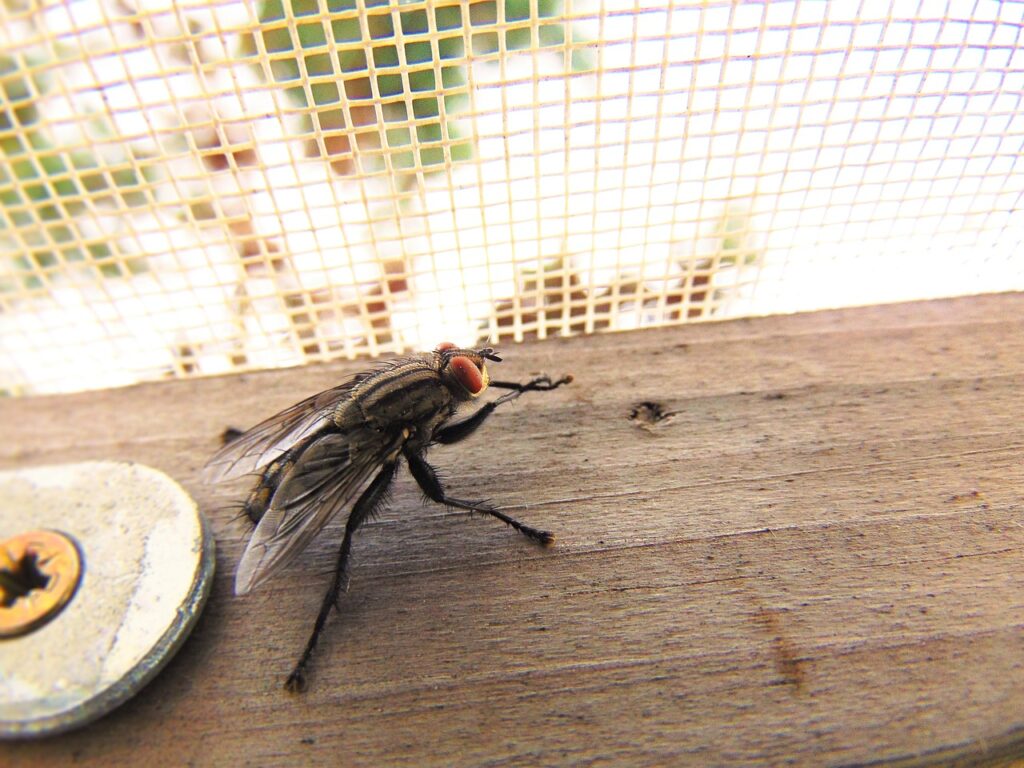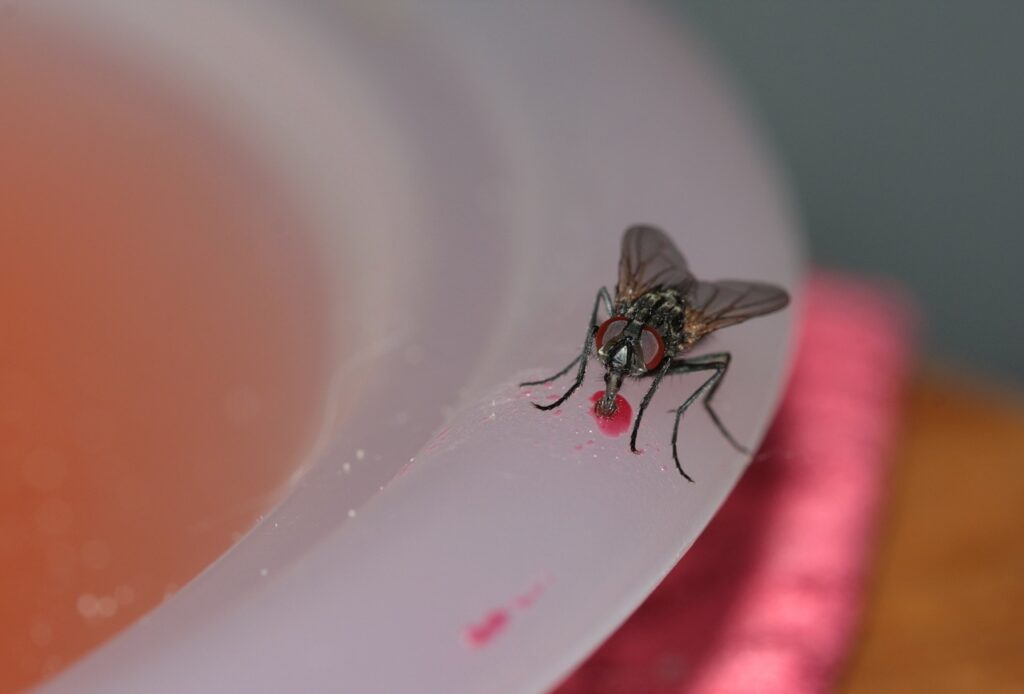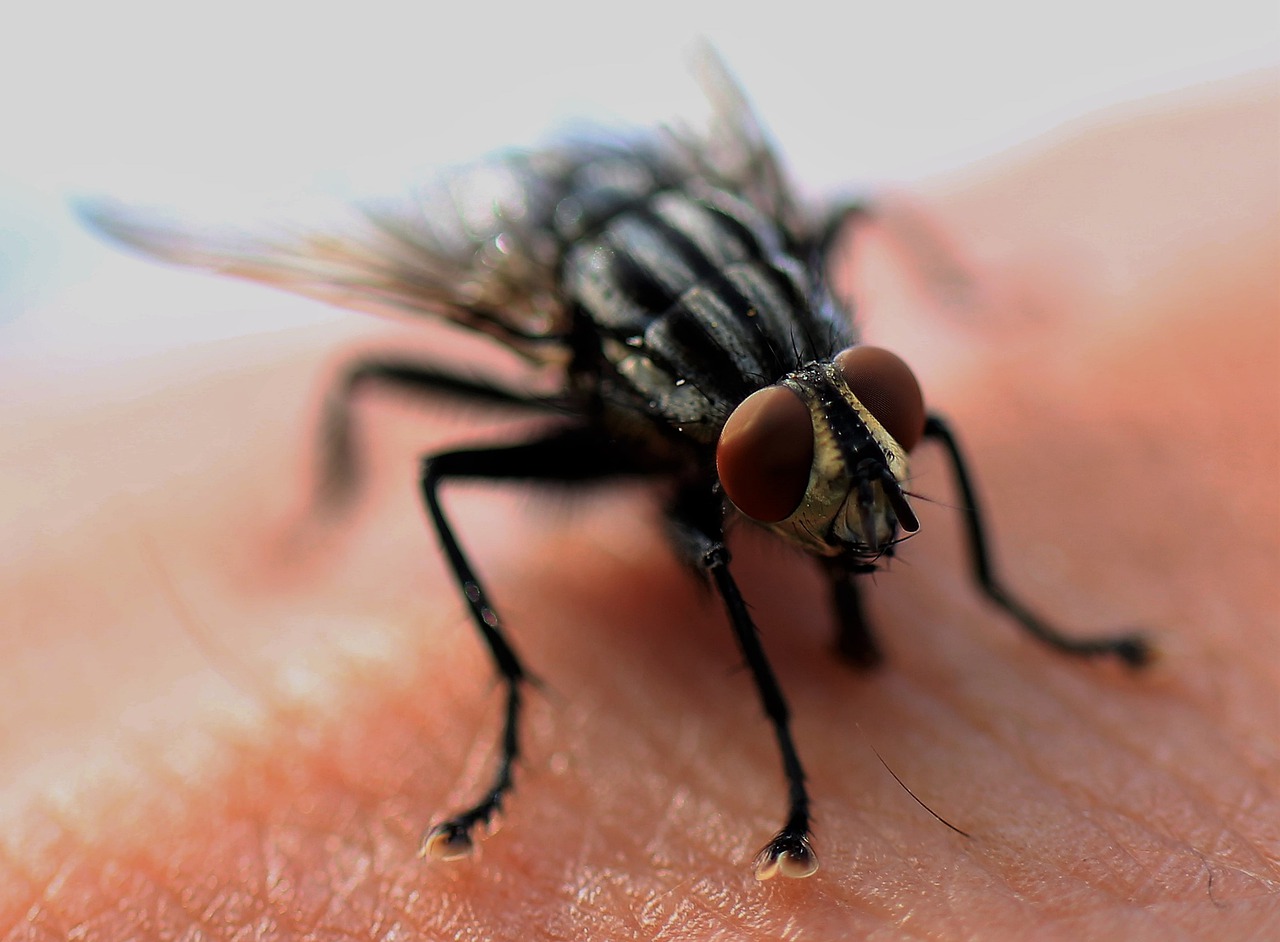Houseflies are not just a nuisance as they buzz around your home. They can be very dangerous. They spread numerous diseases such as cholera, diarrhea, dysentery, and typhoid fever. It also doesn’t help that houseflies are some of the most widely distributed insects in the United States. You should be on the lookout for the signs of a housefly infestation.
Here are the biggest signs you should look out for.
Physical characteristics of a housefly
Before looking into the signs of a housefly infestation, you have to know what a housefly looks like first. After all, how would you know you have houseflies at home if you don’t even know what they look like?
Non-biting flies such as bottle flies, screwworm flies, and houseflies are closer to human habitation compared to biting flies. They typically cohabitate with humans who live in poor sanitation conditions. And among these flies, the houseflies are the most common.
Houseflies are usually gray. They have red eyes that have thousands of tiny lenses. And they have 4 stripes on their thorax. Adult houseflies are about 4 to 7.5 mm small. Maggots, on the other hand, are creamy-white larvae. They are only about half an inch small. The maggot phase of a housefly’s life cycle lasts for only about 4 to 7 days.

1. Live flies
Spotting a single housefly in your kitchen doesn’t necessarily mean that you are suffering from a housefly infestation. It’s probably a hitchhiking housefly you can kill or set free. But you should start worrying if you see a number of these insects consistently.
Give particular attention to your food and water sources. You may be looking at a housefly infestation if you see these insects buzzing around food and water. And when we say food and water, we don’t just mean those that are found in your dining area and kitchen. There are other food and water sources to check, such as animal feces, drains, lawn clippings, septic tanks, and trash bins.
When houseflies are not buzzing around, you will usually find them resting near doors, light sources, and windows.
Even though seeing live houseflies is a tell-tale sign that you are suffering from a housefly infestation, don’t underestimate seeing dead houseflies too.
There is this common misconception that houseflies can live only up to 24 hours. Nothing could be further from the truth. In reality, houseflies can live to up to 28 days. Their lifespan will depend on a variety of factors, such as the availability of food and water and the overall temperature of the area. If you see dead houseflies around your home, you may be looking at a housefly infestation that has been going on for quite a while.
2. Maggots
Adult female houseflies usually leave their eggs on spots where they can be safe from predators and where there is an abundance of food as they hatch. One of the reasons why is that female houseflies don’t really care for their young, unlike other animals. They just leave them in a safe place with some resources to get them started. This is one of the reasons why you often see maggots on dead animals.
Once the eggs hatch, they turn into maggots. These are creamy-white larvae with two hooks that serve as their mouthparts and zero legs. The maggot phase of a housefly’s life cycle consumes up to 7 days of its short life. The whole purpose of this phase is to eat and store energy for the next phase.
The next phase is the pupa phase, wherein the maggot buries itself and develops the appendages that make an adult housefly. Like the maggot phase, the pupa phase lasts for about 7 days. Take note that these time periods are not set in stone. They are just rough estimates.
Seeing these creamy-white crawlers around your home is one of the greatest signs you are suffering from a housefly infestation. You are more likely to see these crawlers near the food and water sources of the houseflies infesting your home. But it’s not uncommon for them to thrive in your garden, lawn, and yard. After all, there are a lot of things that can be consumed outside your home.
3. Black spots
One of the signs of a housefly infestation you should look out for is seeing black spots. These are dark clusters you will find on sink drains, trash bins, walls, and windowsills. But what are these black spots, exactly?
They are the fecal matters of houseflies. You will notice them pop up on spots where houseflies typically hangout. Houseflies can remain unmoved for a moment. And when they finally buzz off, you will be able to see that they have left black spots in the area.
These black spots may be a little harder to find compared to the other signs of a housefly infestation. But if you do see them and they are accompanied by multiple houseflies buzzing around your home, be wary.

Why you should care about a housefly infestation
Houseflies can transmit diseases to humans. That fact alone should convince you to care about housefly infestations. You don’t want these pests buzzing around your home and putting you and your family at risk. If that fact is not enough to convince you, here are other reasons why you should care about housefly infestations:
- Houseflies spit on your food. Here’s the thing about houseflies – they can’t chew. They can only suck on food. But this doesn’t stop them from getting into your sandwich and eating a little part of it. All they have to do is to spit some enzymes onto your sandwich and let it dissolve. They can suck on the dissolved parts. Some of these enzymes stay on your sandwich even after the houseflies have buzzed away.
- Houseflies travel from dirty areas to your dining table. Houseflies consume things and stay in places that you can consider as disgusting. They have millions of bacteria and viruses in their bodies. And they transmit these potentially-harmful organisms as they buzz around your home. It’s actually not their enzymes that cause diseases, but these organisms that they carry with them from dirty areas to your dining table.
Pest problems are no laughing matter, especially housefly infestations. If you see these signs of a housefly infestation, take it seriously and call for professional pest controllers if necessary.

